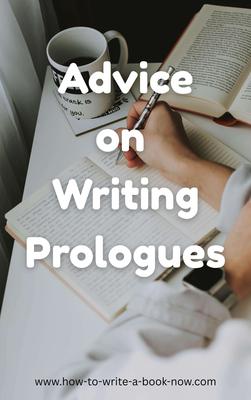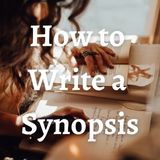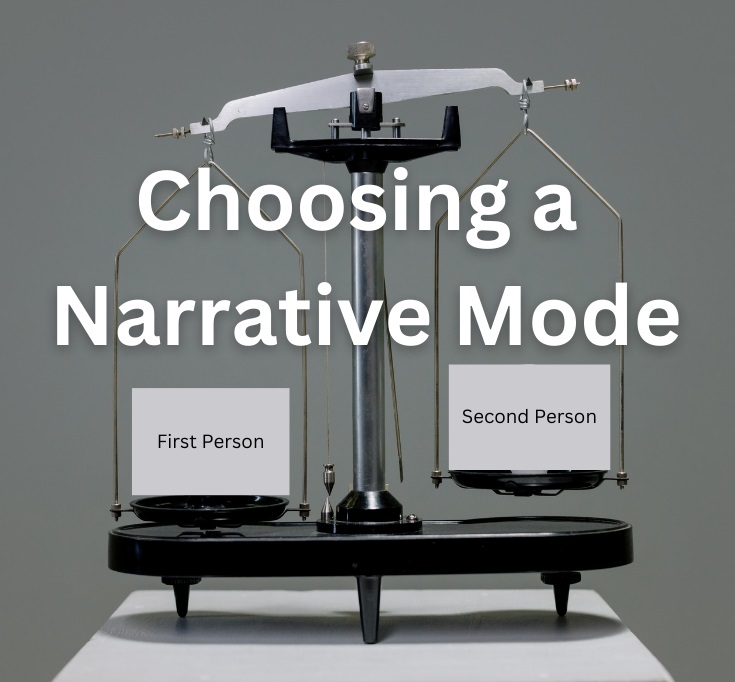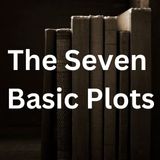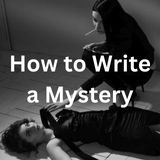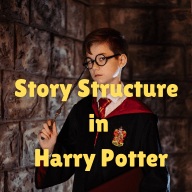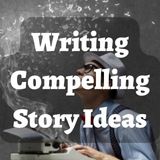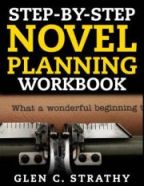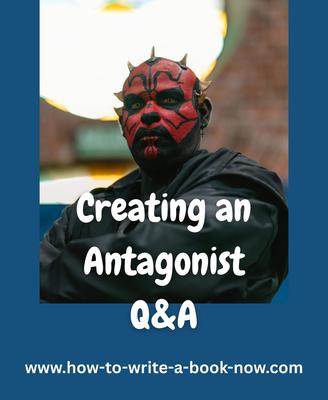Prologue Or No Prologue
by Bryce
(United States)
I have just started to write a fantasy novel, but I am in a bit of a jam trying to decide whether to start with a prologue or no prologue. I have a rough outline of the novel, as well as the events that occur within it, and a pretty good plot. On top of that, I have a good array of characters and the roles that they play in the story. So, at first, it may sound like I have everything I need and should have no trouble moving on from here. But, I am having a hard time trying to find a good place to start the story. I've tried writing a prologue of sorts to help the reader understand the events of the story itself, but that has gotten next to nowhere. So, my question is: should I drop the prologue, since it is not working, and somehow explain past events to the reader as the story progresses, or should I keep trying at the prologue until I can get it to work?
So, as before, should I drop the prologue and somehow explain past events to the reader as the story progresses, or should I keep trying at the prologue until I can get it to work? Moreover, any opinions on the overall story? Do you think I should add/take away/change anything? Thank you so much!
Answer:
No hard rule exists here, so just take the following as guidelines or considerations.
As with most stories, your prologue covers the initial driver (or inciting incident) of the story. It is where the story begins chronologically.
However, many readers skip prologues, especially when the main character is not present or aware of them. They do this because they make their decision whether to keep reading a novel based on their impression of the main character in the opening pages, and many prologues take place before the main character enters the story.
For this reason, it is often more effective to begin where the main character enters the story. Show the reader who this character is in the opening pages and make the reader fall in love with him before the adventure really starts.
This technique also creates a little mystery. The reader may see other characters reacting to the initial driver, but not know why they are doing it. So the reader wants to keep reading to find out what's going on.
You can then fill in the reader on what happened in that initial driver later on.
In the case of your story, you are introducing the Prince in the prologue, as an adult I assume. So you may be able to make the reader like the character enough to keep reading. (But then, why call it a prologue? You could just call it "Chapter One.")
However, you might not create as much mystery that way. So it might be more effective so begin with the Prince in prison. Show who he is, his current situation in a way that the reader feels empathy for him. Maybe fill the reader in on how he got there a few pages in.
You might also consider how the Prince will react to his rescuers when they arrive on the scene. Does he know them? Will he trust them? Maybe he's become comfortable in prison and doesn't want his world disrupted. A little mystery regarding the rescuers may also help. You may want to drop a hint that they don't tell him the whole story.
The crisis of the story seems to be the moment when the Prince finally decides to join the cause, so you might consider what changes his mind. Give him a good reason for changing. (What does he realize, discover, etc.?) You may want to develop one of the rescuers as the impact character -- someone with the opposite attitude to the Prince. Perhaps it will be someone who puts the cause above his self-interest? (Could be a love interest.)
I don't see any initial problems, though you need to develop the story a bit, either in your outline or in the writing of your first draft.
Best of luck.
Comments for Prologue Or No Prologue
|
||
|
||
|
||
I have a short prologue...
Question: I have a short prologue in my book, about three Microsoft word pages. I've read that it is bad to have one but I really like how it fits with my story. It is told through the eyes of a minor character and you get to meet the main character as she goes through a very difficult time. You also meet her family and you see the type of world the book is in. My question is, would it be ok to keep the prologue?
Answer: There is no "rule" or guideline in fiction writing that doesn't get broken sometimes. Every time you read "Don't do X," it really means "Don't do X ...unless it makes the writing or the story better."
You have to ask yourself why you want to include a prologue.
Sometimes, a prologue is used to present the inciting incident, the event that causes the rest of the story to unfold. Or it can be used because the writer wants to show the beginning of the overall story throughline, and these events happen to occur before the main character enters the story.
Generally, readers like to meet the main character in chapter one and get immediately into his/her head. It's disappointing when this doesn't happen. So the usual practice is to introduce the main character in the first chapter and if there is a key event that occurs before the main character enters, it gets made into a prologue. Sometimes even a whole series of events is summarized in the prologue so that the reader can get to the main character quickly. (For instance, at the start of the film The Lord of the Rings, there's a prologue that summarizes some 3,000 years of history.) Readers who hate prologues can just skip to the start of Chapter 1. If they get confused, they can go back and read the prologue later.
In some stories, the main character is present for the inciting incident, but there is a lengthy time gap between the event and the next time the main character appears. For instance, the inciting incident may happen when the main character is a child, but the story doesn't really get going until ten years later, after the main character has grown up. That's really the first time we get a clear sense of who the main character is. So again, the earlier incident becomes a prologue.
Often too, you see stories where the inciting incident is an accident or a crime. Then the story jumps to months or years later and we encounter the main character whose personality has been shaped by that tragedy. And that's when the story picks up again.
You may find, maybe after you've written a draft, that you can cut the prologue altogether. Or, if it is essential to the story, you may find an opportunity to use a flashback or a recounting of the past at a later point in the story, so that the reader learns what happened in another way. The advantage is that the reader can meet the main character and fall in love with him/her immediately.
However, don't feel that you have to decide right away. .
Comments for I have a short prologue...
|
||
|
||
Prologue
by Georgia
Question: I have a prologue for my book, but I don't feel it will open the story very well; chapter one feels like a better opener. However, I can't add it as a later chapter because it wouldn't fit into the time frame or POV of the rest of the story (it takes place 12 years before).
Is it possible to put Chapter One, then a Prologue, then Chapter Two or would that just be silly?
Thank you.
Answer: By definition, a prologue comes before the story. However, that doesn't mean you must reveal the story in chronological order.
The challenge is that readers often prefer a story to begin with the main character's throughline. However, the inciting incident of the story may be an event that takes place long before the main character enters the story. So one solution is to describe this inciting incident in a prologue. Calling it a prologue reassures the reader that the "real" story (i.e. the main character's story) hasn't started yet.
But let's say you really want to start with the main character, rather than the overall throughline via a prologue, but you also want the reader to know what happened long ago. You could turn the prologue into a flashback that can be inserted later in the story, much as you suggest. Don't call it a prologue, however. Just make it a chapter and number it like any other chapter.
You might find it more effective to include your flashback at the end of an act rather than immediately after the first chapter, so that the reader has a chance to get into the main character's story first. In some stories, you might not reveal how the story started until the very end, in an epilogue, to create a mystery.
Alternatively you could have the main character learn about the events of the earlier incident at a later point in the story. Devices to accomplish this include things like...
* getting the story from other characters, documents, or records,
* gathering scene-of-the-crime evidence to deduce what happened,
* having psychic impressions, dreams, or memories (for instance, if the main character was present but was too young to remember years later what happened, until something triggers the memory).
Murder mysteries, for example, often depend on not revealing the details of the murder (which starts the story) until the end.
If you don't want the main character to find out what happened, but you still need the reader to know, another approach is to switch to a different character's point of view and reveal the events either through that character's memory or conversation. This can create dramatic irony, in which the audience knows what past event is causing things to happen in the present, but the main character doesn't.
Best of luck.
Prologue integration
by Deana
(Massachusetts)
Question: My novel begins with a prologue that depicts an action sequence involving the three main characters (2 protagonists, 1 antagonist). The sequence takes place near the end of the story, which consists of two parts: the first part being when the protagonists are 10 years old, the second when they are 16. How do I integrate the prologue? Do I insert it as a chapter, verbatim, in the appropriate spot of the storyline? The prologue is originally through the eyes of one of the protagonist, third person omniscient...is it acceptable to switch the POV to the other protagonist for that actual chapter instead, or is that too disruptive to the reader?
Response: Deanna, you have given me quite a brain-twister here (unintentionally, I'm sure). Your question is so full of contradictions I was tempted to simply not attempt an answer. But then I thought that if I can unravel this knot a little, maybe that might help you clarify your own thoughts.
It could be just that if we get clear about some terms, the answer will appear.
Here's what I mean by contradictions...
1. The "prologue is originally through the eyes of one of the protagonist, third person omniscient."
You can either tell the story through the eyes of one character or from an omniscient point-of-view, but not both. Omniscient means "all-knowing," and it's the mode that offers a bird's eye or godlike perspective on the story--one that can move around from place to place, character to character.
Third person, limited, narration is confined to the main character's perspective. The reader only knows the main character's thoughts and feelings and what he/she perceives of the external events.
2. This is a prologue, but "it takes place near the end of the story." Generally, prologues describe events that take place before the story properly begins. (The word "prologue" literally means "before the story.")
Perhaps you are not telling the story in chronological order? If so, and you want to begin with an event that takes place near the end of the timeline, then perhaps it's more of a "flash-forward"?
3. The prologue features two protagonists. This is a minor note. I think you simply mean two characters who play major roles and are not on the side of the villain. Generally, there is only one protagonist--the character who is leading the pursuit of the story goal. Other characters may contribute in different ways, of course. But it would be a little redundant to have two archetypal protagonists, especially within the same scene, because they would do nothing but mirror each other.
Now, I'll try to answer your questions...
"The prologue is originally through the eyes of one of the protagonist, third person omniscient...is it acceptable to switch the POV to the other protagonist for that actual chapter instead, or is that too disruptive to the reader?"
The rule is that you should not switch points of view within a scene, because that is jarring for the reader. Readers like to imagine themselves in the shoes of the POV character, and a sudden switch destroys that illusion, much like an actor who breaks character. Generally, it is best to only switch points of view at chapter breaks.
That said, it is possible to present a scene twice, from two different points of view. You might do this if the second telling reveals important things which the first POV character did not perceive (due to age, perspective, awareness, etc.) in order to let the reader and the characters reevaluate the event.
How do I integrate the prologue? Do I insert it as a chapter, verbatim, in the appropriate spot of the storyline?"
You have the choice of presenting events in chronological order, or telling the story out of sequence.
For instance, if the inciting incident or the initial events of the overall story do not involve the main character, they can be told in a prologue so that the first chapter begins at the point where the main character enters the story.
In other stories, it makes more sense to begin with the main character and use a flashback at some point to fill the reader in on what happened.
In non-chronological stories, you might begin at the ending, putting a flash forward in place of the prologue. You might do this to create a mystery, where the reader wonders what could have happened to create the situation in the flash forward. The rest of the story answers that question.
You can also choose to insert the flash forward at another point along the timeline. Generally, it is better to put it into its own chapter and give it a very different tone than the rest of the story. Give the reader some clues or cues to make it obvious that this event is a departure from the timeline. If it's not too long, you might even consider putting this chapter in italics.
You have to trust your feelings when choosing the right place to insert this event.
If I've misinterpreted your question or you have a follow-up, please feel free to post it as a comment below and I'll try again.
prologue or not
Question: I'm not sure if I should do a prologue or not because there's stuff that happens before that explains how the world got the way it is and then there's my main character who get's put in this place when she's little and I want to say a little about what happens in the camp and then jump to 10 years later and that's when the story truly takes place but I'm not sure if I should put the 2 things and just make that the first chapter or if I should make one the prologue and the other the first chapter. I'm leaning more towards making it just the first chapter with no prologue but I want another opinion.
Answer: If it's possible, it may be better to start with the main character in the present (that is, 10 years after the incident in the camp) and then tell the earlier events in a summary or flashback later. There is an advantage to getting the reader involved in the present dilemma of the main character right away.
This is not a rule, however, and you will see plenty of examples where the opposite is done. An obvious example is Harry Potter where we see Harry as a baby being dropped off at his aunt's doorstep. The book then jumps ahead 10 years and we meet Harry in the present.
In this case, the opening works because there is a mystery being created. We wonder what happened to Harry's parents. Also, we are introduced to terms and events that are not fully explained. (How can this woman turn herself into a cat, and why is she called "Professor"? What does she mean by "our world"?)
If the incident in the camp creates a mystery that pulls the reader into the story, then it might work as the opening. On the other hand if it's there to explain something about the main character's personality, it may be better to tell it in flashback later. That way, you make the reader wonder for a time why the main character is the way he/she is, which keeps them reading to find out.
As for how your story world got the way it is, which I'm guessing is your inciting incident, again there is no hard rule. However, it is usually better to get the readers involved in the present problem and then fill them in later on how it got that way.
Writers will often hide the beginning of the story deliberately in order to create a mystery. Again, taking Harry Potter as an example, you'll notice that the inciting incident (the murder of Harry's parents) is not told at the beginning. Rather, the story starts with Harry's uncle wondering why the streets are full of oddly dressed people celebrating something and calling him a Muggle.
Showing the characters reacting to something, but not telling the reader what event they are reacting to makes the reader want to keep reading to find out what's going on.
Again, this is not a rule. Some books do begin with a prologue that sets the stage. What you have to ask yourself is whether your prologue is the most effective way to pull the reader into the story. Will it be a stronger pull than starting with the main character's present day dilemma? For instance, does the prologue create a mystery or introduce an intriguing situation? Is it told by a compelling narrative voice?
Usually, you can create a stronger hook by starting with the main character wrestling with his/her present dilemmas and inner conflicts, which is why this is the most popular choice. But you have to decide if it's the strongest choice for your story.
The opening pages of a novel are the most important, because it is there that the reader decides whether or not the book is worth reading. And it is where agents and editors make (admittedly snap) decisions about whether your book is publishable.
You might want to write all three openings and ask some people which one makes them want to keep reading more.
Prologue
Question: I planned on having a prologue and introducing the main character at the end of it. Should I do that or should I wait till the first chapter?
Answer: For a lot of readers, it's important to connect with a main character who they can empathize with right away, preferably on the first page.
Prologues cause problems because they often are the start of the overall throughline (rather than the main character's throughline) and often concern events that take place before the main character enters the story. Sometimes they concern events that happen before the main character is born or when the main character is too young for his/her story to really begin.
In fact, this is why they get labelled "prologues," which literally means "before the story." It's a way of reassuring the reader that the real story hasn't begun yet.
Often it is better to leave out the prologue and simply fill the reader in on what happened later on, either in flashback, memory, or by having the main character find out what happened from someone else.
If that doesn't make sense in your story, I would suggest you introduce the main character at the start of chapter one, because some readers will simply skip the prologue anyway, and you don't want them to skip the introduction of the main character.
Again, this depends on the main character's age when introduced.
For example, in Harry Potter and the Philosopher's Stone the first chapter is much like a prologue in that it shows events that occur when Harry is a baby -- before the reader begins to see the story through Harry's eyes. The novel begins in Vernon Dursley's point-of-view, and later switches to Dumbledore's.
This is actually a problem for some readers, because it is quite a few pages before Harry is introduced. Harry's story doesn't really begin until he is 11 years old.
At the same time, Rowling was wise enough not to show Voldemort's attack on the Potter family, which would have made a more lengthy prologue. Instead, the reader finds out about the event later when Harry does. Omitting this event creates a little mystery which helps pull the reader into the story. Like Vernon, the reader wonders what all these oddly dressed people could have been celebrating the day before the infant Harry arrives on the doorstep.
My First Chapter is a Prologue
by Erica Lin
(Ontario, Canada)
I’ve completed my outline, and I’ve written the first two chapters of my book already. I’m very happy with what I have so far. But I'm wondering if my first chapter is a prologue.
My first chapter opens up to when my protagonist is younger, as she runs into a very significant obstacle, which acts as a motivating force for her later on. In the second chapter, she is much older, and leaps into the story right away.
I believe my first chapter is vital because it shows her habitual way of acting towards conflict, and also establishes the necessary mood for my book.
The problem I have is I don’t really know if my first chapter would be considered a prologue. Though I wouldn’t like to consider my first chapter a prologue, I’m afraid the readers and publishers may see it that way, and will find it annoying or over-done.
If you do consider my first chapter a prologue, should I cut the first chapter out and start with chapter two instead? Is there another way to incorporate my first chapter, not in the form of a prologue, but in something else? I am a bit iffy with the idea of starting the book with chapter two as it seems a bit sudden and random.
This isn’t a huge problem - but I would like to know your opinion! Any advice from you would be awesome! Thank you for taking the time to read my post. Your advice and posts are very helpful and informative - so thank you!
Cheers from Canada!
Answer: Hi Erica,
Generally, a good prologue describes the inciting incident or initial driver of the story. Often it is an event that, though essential to the plot, occurs before the main character enters the story, or before the main character is old enough for her story to really begin.
Some readers don't like prologues (and may actually skip over them) because they want to meet the main character right away. Also, some prologues are badly written, in that they present material that is not essential to the story, fail to set up the story problem, and are therefore boring.
Other readers don't mind prologues if they do a proper job of setting a degree of suspense or creating a story problem that demands a solution -- in other words, drives the plot.
It sounds like your opening event may be a genuine initial driver. If so, here are some of the different ways you could present it...
1. You could actually make it a prologue. Lots of successful books have one. For instance, I'm reading the suspense novel We'll Meet Again at the moment which was a New York Times Bestseller a decade or so ago. This book opens with the main character being sentenced to prison for murdering her husband and sets up some of the tensions to be explored upon her release five years later, in Chapter 1. This works because we meet the main character right away and a mystery is created to draw the readers in (She has no memory of killing her husband, so did she really do it?).
However, it cannot be denied that prologues are out of favour at the moment. I think when this book was written prologue skipping was less common. If this book were published today, I think this prologue might be cut (see 3 below).
2. You can label the initial event Chapter 1 to prevent skipping. In Harry Potter and the Philosopher's Stone, the initial driver is Voldemort's attack on the Potter family. Rowling doesn't describe this event, but starts the story the next day with the aftereffects (Harry being dropped on the Dursley's doorstep).
Harry's delivery on the doorstep could have been a prologue. But Rowling labels it "Chapter 1" instead which deters the prologue-skippers. But for some readers this is a weak opening because we don't actually meet Harry properly until Chapter 2 when he is ten years older.
Opening with a minor character's point of view can feel like a bait-and-switch. The opening pages of this book might make some readers thing the story is about a middle-aged man named Vernon Dursley, not a character children can identify with as easily. That's the risk of delaying the main character's arrival. Fortunately, Harry's name is in the title.
In your case, this is less of a concern since your main character is present for the initial driver.
3. You can open in the present with the main character and fill the reader in on the initial driver later on. This happens in The Hunger Games. The initial driver is the mining accident that kills the fathers of Katniss and Gale, forcing them to develop their survival skills. However, Collins wisely opens the story years after this event so she can introduce the reader to Katniss right away. The reader is filled in on the initial driver in the first chapter via flashback.
4. This may not apply to your story, but in rare cases where the main character does not remember the initial driver or was not present for it, it is often best if the reader learns about it when the main character does, which might be a considerable way into the story.
Bottom line...
I think you may be better off just calling your initial event "Chapter 1," especially since it introduces your main character, sets up the plot, and establishes the tone for the book.
Labelling it a prologue would only invite the skippers to skip.
Best of luck.
Comments for My First Chapter is a Prologue
|
||
|
||
Prologue or Flashback Later?
by JJ
My prologue isn't something very exciting, at least not in my opinion. It has all the necessary "hooks" to keep people reading, but I fear that, unless one could see in a movie, it just feels a little too character centric for a book I'd be advertising as high fantasy. I'm wondering if this event would be better told as a prologue or a flashback later in the story, leaving the tragedy that happened a mystery until then.
So that you have an idea of what happens, my MC, being an immature, foolish, naive 14 year-old, believes herself to be pregnant after convincing her boyfriend to have sex with her a week earlier. She makes this out to be such a great thing, sunshine, rainbows; you name it. A new baby, yay! Better yet, it belongs to her and the person she's fallen madly in love with and trusts with everything she is!
Anyway, she and him are from historically rival families, a la Romeo and Juliet, though they've made up, more or less (at least the family of my MC thinks there are no more issues, the rival family's head is actually the antagonist of the story), so they're not in any conflict at this point. The boyfriend, since his parents didn't actually mean to birth a boy (for reasons irrelevant to this question), has been trying hard to be honourable enough to build up the confidence that his parents never gave him. However, as you can guess, a whole childhood of being largely ignored created a low self-esteem, so he, being paranoid, freaks out because his girlfriend's pregnant (what will people think of me, a noble, for impregnating a girl who's barely a teen? What will my parents do to me if they find out I had a child with an Armielle, our age-old enemy? I'll be tarnishing their name and they'll disown me), and basically tells her to go to hell and die in a ditch somewhere for, get this, *cheating on him with a peasant.*
He threatens her, telling her that if she doesn't admit that she was throwing the sheets with strange men, he was going to murder the man who "defiled her" in front of her eyes, which means he'd just pick a random, shady looking innocent off the street, accuse him, and kill him. She gets emotionally wrecked, her self-esteem also goes to a dark hole, and that marks her origins as the bratty, bully princess, the black sheep of the royal family who's hypersensitive and afraid of being harmed. She doesn't tell anyone in her family about this because since a person she trusted like her own brother betrayed her, she fears her own blood might turn on her too.
Spoilers; she was just sick, she wasn't actually pregnant... It was just the betrayal itself that broke her. Now she hates his family with a passion and wants to murder them, etc, etc...
But alright, this prologue is NOT directly relevant to the plot, it is only relevant to explain why she is the way she is, and to also give a strong reason as to why she makes a rather dark decision in the climax of the story. So, it is relevant, but at the same time it isn't, and that's my problem. It doesn't make you interested in the cool world I built, it makes you interested in the character, and then come chapter 1, you get sharply turned back to the high fantasy you were promised. It just feels weird to me. I understand having 3D characters is good, I'm not looking to get rid of the prologue, but as I said, knowing all this, would it be better if I just revealed why she's so damaged later and start the story at chapter 1?
Sorry for the length, didn't think it would be this long of a question.
Answer: A lot of readers don't like prologues for a couple of reasons.
1. Many prologues happen before the main character enters the story, whereas readers generally prefer to meet the main character in the present and make their decision whether to keep reading based on the appeal of that character.
2. Bad prologues present pure background information which delays the start of the story, whereas readers generally want to begin where the story starts and decide whether to keep reading based on that.
That said, the best prologues present a brief event (i.e. change or turning point) that is the initial driver of the story. By "initial driver," I mean the event that causes the rest of the story to unfold. It's the real beginning of the story, without which the main or external plot would not happen.
Even then, if the main character is not present when the initial driver happens (for whatever reason), it is often more effective to begin the book by introducing the main character and filling the reader in on the initial driver later, through flashback or having the main character find out about it from someone.
Hiding the initial driver also lets you create some mystery. The reader may see various characters reacting to the initial driver, but won't know why, so they have to keep reading to find out what's going on.
So if you are going to have a prologue, I suggest you...
1. Make it about one event.
2. Make it the event that begins the external plot.
In the case of your story, since the imaginary pregnancy is purely character backstory and contains an arc of multiple events (sex, presumed pregnancy, threats etc.) -- and, since you say it's not very interesting -- I'd suggest you reveal it later in the story as a way to explain the relationship between these characters. Begin the story in the present and help the reader to get interested in the main character right away.
Best of luck.
Comments for Prologue or Flashback Later?
|
||
|
||
Can the prologue and introduction be in the same chapter?
by Nathan Williams
(Denver, Colorado)
Question: I recently finished my 2nd draft of the first chapter of a book I'm working on, which opens with an event that will act as a Chekhov's Gun for a later chapter (shown below). Then goes into the introduction of my main characters. But, can the prologue and introduction both be in the same chapter or can they only be separate?
A toddler was happily playing with his action figures; a robot in his right hand and a knight in the other, giggling all the while. Nearby palm trees in the backyard shaded the bald child from the setting sun like giant umbrellas. The autumn breeze blowing through his navy blue tank top. Until a female voice called out for him.“Daniel, it’s time come in!”
“Oh boy!” he said as he dropped his toys and quickly waddled back toward the house. Dusk's dark shadows soon washed over the now lifeless toys like a blanket; the wind releasing an eerie howl.
Answer: It would be pretty difficult to write a prologue that didn't introduce at least one character. A prologue should, after all, be about an event. And an event means a change that affects someone.
Of course, you don't necessarily have to introduce your main character in a prologue. A prologue often describes an event that occurs before the main character enters the story (which is one reason some people dislike prologues). You may introduce your antagonist, guardian, sidekick, or other character, for example.
Either way, the prologue (or initial driver, or inciting incident) concerns an event that gets the ball rolling in regards to your plot. It may create a situation, a goal, or an imbalance that must be resolved in the course of the story.
A first chapter that introduces characters but doesn't contain an event could be pretty dull. It would be a chapter in which nothing happens -- which is usually not the best way to grab a reader's attention.
So I would suggest that the first thing you present to your reader -- whether you call it a prologue or Chapter 1 -- should both describe an event and introduce at least one character.
Best of luck
- Home
- Plot Questions
- Can the prologue and introduction be in the same chapter?
